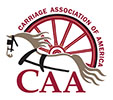
The sport of flying homing pigeons was well-established as early as 3000 years ago. They were used to proclaim the winner of the Olympics. Messenger pigeons were used as early as 1150 in Baghdad and also later by Genghis Khan. By 1167 a regular service between Baghdad and Syria had been established by Sultan Nour-Eddin. In Damietta, by the mouth of the Nile, the Spanish traveller Pedro Tafur saw carrier pigeons for the first time, in 1436, though he imagined that the birds made round trips, out and back. The Republic of Genoa equipped their system of watch towers in the Mediterranean Sea with pigeon posts. Tipu Sultan used carrier pigeons. They returned to the Jamia Masjid mosque in Srirangapatna, which was his headquarters. The pigeon holes may be seen in the mosque’s minarets to this day.
In 1818, a great pigeon race called the Cannonball Run took place at Brussels. In 1860, Paul Reuter, who later founded Reuters press agency, used a fleet of over 45 pigeons to deliver news and stock prices between Brussels and Aachen, the terminus of early telegraph lines. The outcome of the Battle of Waterloo was also first delivered by a pigeon to England. During the Franco-Prussian War pigeons were used to carry mail between besieged Paris and the French unoccupied territory. In December 1870, it took ten hours for a pigeon carrying microfilms to fly from Perpignan to Bruxelles.
Historically, pigeons carried messages only one way, to their home. They had to be transported manually before another flight. However, by placing their food at one location and their home at another location, pigeons have been trained to fly back and forth up to twice a day reliably, covering round-trip flights up to 160 km (100 mi). Their reliability has lent itself to occasional use on mail routes, such as the Great Barrier Pigeongram Service established between the Auckland, New Zealand, suburb of Newton and Great Barrier Island in November 1897, possibly the first regular air mail service in the world. The world’s first ‘airmail’ stamps were issued for the Great Barrier Pigeon-Gram Service from 1898 to 1908.
Birds were used extensively during World War I. One homing pigeon, Cher Ami, was awarded the French Croix de guerre for her heroic service in delivering 12 important messages, despite having been very badly injured. Crewman with homing pigeons carried in bombers as a means of communications in the event of a crash, ditching, or radio failure. During World War II, the Irish Paddy, the American G.I. Joe and the English Mary of Exeter all received the Dickin Medal. They were among 32 pigeons to receive this award, for their gallantry and bravery in saving human lives with their actions. Eighty-two homing pigeons were dropped into the Netherlands with the First Airborne Division Signals as part of Operation Market Garden in World War II. The pigeons’ loft was located in London, which would have required them to fly 390 km (240 miles) to deliver their messages. Also in World War II, hundreds of homing pigeons with the Confidential Pigeon Service were airdropped into northwest Europe to serve as intelligence vectors for local resistance agents. Birds played a vital part in the Invasion of Normandy as radios could not be used for fear of vital information being intercepted by the enemy. From Wikipedia.org
The Mobile Pigeon Loft was introduced in France and Flanders in the early stages of the First World War, remaining in use until the mid 1920s. By 1918 there were over a hundred used on all parts of the Western Front. Each vehicle contained fifty to sixty carrier pigeons in the care of an NCO and fatigue man.. Brian Young.
Other References: C. P. Beauchamp Walker. “Pigeons For Land and Sea Service,…” Journal Of the Royal United Service Institution. Vol. 36 No. 171 (May 1892); C. P. Beauchamp Walker. “Use of Pigeons As Messengers In War and the Military Pigeon Systems of Europe.” Journal Of The Royal United Service Institution. Vol. 30 (January 29, 1886); G. J. Larner. “The Homing or Carrier Pigeon In Warfare.” United Service Magazine. Vol. 22 new series (October 1900 to March 1901).
